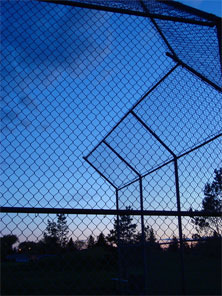The gist: A fair cap-and-trade system is a climate policy solution we can get excited about. Here are tips for taking cap-and-trade from meetings with fellow policy-wonks and to a broader audience without losing momentum. We also point out cap-and-trade policy essentials — the ingredients for effective, efficient, and fair policy — as well as the most common pitfalls and offer some tips for avoiding them.
Cap-and-trade: Everybody’s talking about it. So can you.
Thanks to Susan Kerbel, PhD, for her help on this Flashcard. Thanks also to the smart and dedicated folks at Climate Solutions.
Flashcard Tips:
1. Take charge of our energy future.
Energy prices are rising no matter what. And it will just keep getting worse if we prolong our dependence on fossil fuels. It’s simple supply and demand. Cap-and-trade, designed fairly, is a strong, market-based way to reduce that dependence and to shift to a more stable energy economy. Right now, we’re sending billions out of local economies to pay for foreign oil. In a cleaner energy future, that money stays at home and stimulates local economies.
Smart policies like a fair cap-and-trade system can help us take control of our energy future by turning rising costs into broadly shared benefits. Designed to reward efficiency and innovation, cap-and-trade can generate revenue to minimize the impacts of higher energy costs on consumers and to train a “green” workforce, develop smarter technologies, and build energy-saving infrastructure.
2. A proven and prudent investment.
Cap-and-trade is a prudent investment in our future, an investment in our long-term stability and security.
And it’s proven effective — In the 1990s, a cap-and-trade system worked to cheaply and efficiently curb acid rain in the U.S.
3. A recipe for long-term prosperity.
The key to our long-term prosperity is a shift to a clean energy economy and away from dependence on oil. This shift can work for businesses and consumers alike.
Cap-and-trade drives pollution down gradually, allowing our economy to adjust. It not only helps jump-start a clean energy economy by rewarding innovation and efficiency, but also gives businesses a recipe for success: flexibility, clear goals, and a predictable time-line.
4. The cap is our guardrail, our guarantee.
 A firm cap — with no loopholes and no leaks — is a solid backstop or guardrail that keeps us on track; it’s the only way to guarantee that we reach our emissions target.
A firm cap — with no loopholes and no leaks — is a solid backstop or guardrail that keeps us on track; it’s the only way to guarantee that we reach our emissions target.
The cap is the most fundamental piece of a successful climate policy solution. The cap puts a firm limit on pollution and drives emissions down over time. This protects all of us in the long run. Loopholes (like so-called “safety valves”) create leaks in the cap and greatly diminish the effectiveness of the policy.
See also: Climate Communications Checklist.
Climate policy essentials
Cap-and-trade is tested and proven. Designed without big giveaways and without loopholes, it’s a prudent long-term investment, it rewards innovation and efficiency, and it can generate revenue to defray high energy costs for consumers. Cap-and-trade revenue can also go to research and development and to job training for a green-collar workforce. Here are the policy essentials for this kind of win-win solution:
- No more free dumping ground: Put a price tag on climate-changing pollution and make polluters pay.
- The cap: A firm cap is the solid backstop behind all other complementary climate policies. It’s the only way to guarantee that we can reach our emissions targets.
- No big giveaways to polluters: Grandfathering equates to massive windfalls at the expense of consumers. To avoid needless windfall profits by a few and to provide vital public revenue, permits should be auctioned, not given away. European polluters reaped windfall profits under their permit trading system in which allowances were given away to the biggest polluters. The European Union is now trying to rewrite their original plan to compensate for this mistake. We can learn from their mistake and do it right the first time around, saving ourselves enormous headaches and delays.
- All sectors included: More than half of all fossil fuel emissions in the Northwest come from transportation. It’s critically important that transportation fuels be covered in the first phase of a cap-and-trade program. If you leave out major sectors, you have no guarantee of reaching targets. And leaving sectors out puts an unfair burden on the sectors that are in.
Avoiding Common Pitfalls
- Keep it simple, optimistic, and upbeat: We build momentum by focusing on how prudent, smart, effective, and fair this solution can be, and on the enormous benefits, potential, and opportunities involved in getting it right. We lose support when we dwell on complications or setbacks.
- What about consumer impacts?: We’ve said it before: energy prices are going up no matter what, with or without climate policy in place. But climate policy can turn these rising costs into broadly shared benefits. One of the most effective ways to minimize impacts on consumers is to auction pollution permits. Revenue can be refunded directly to consumers, or to certain groups of consumers (such as those with low-incomes or in rural areas). Revenue can also be directed into research and development, infrastructure upgrades, transit service, mobility enhancements, or dozens of other programs that would effectively reduce our demand for energy. And reducing the demand would reduce price increases.
- No leaky loopholes: Avoid reinforcing deceptive terms used to describe loopholes that do nothing but poke holes in the cap: “safety valve” or “escape hatch” or “circuit breaker” (terms used to describe price limits on pollution permits). Instead, tell it like it is: loopholes and leaks — anything that destroys the integrity of a solid cap — keep us from our emissions goals. Both the environment and the economy need the certainty of a solid cap.
- Economy-friendly. Cap-and-trade provides certainty and a predictable time-line for businesses. And gradual reductions allow our economy time to adjust. A market system like cap-and-trade is designed to create incentives for the cheapest, fastest, and smartest measures to reduce pollution. Smart cap-and-trade creates incentives to innovate to find the least-cost solutions for shifting to cleaner, greener energy solutions. Cap-and-trade (with auctioned permits) helps tip the playing field away from big historic polluters and toward leaner and cleaner competitors, smart start-ups, and entrepreneurs.
- Doing what’s right: We may save money in the long run, but cap-and-trade isn’t about promises of lower energy bills or cash in consumers’ pockets. This is about doing what’s right, about smart solutions that make a difference, about our moral responsibility and the legacy we want to leave behind, and about seeking green opportunities that can benefit local economies.
These resources are part of an ongoing dialogue about communications strategies and climate policy. Please send your comments and ideas to Anna Fahey: anna@sightline.org.










Comments